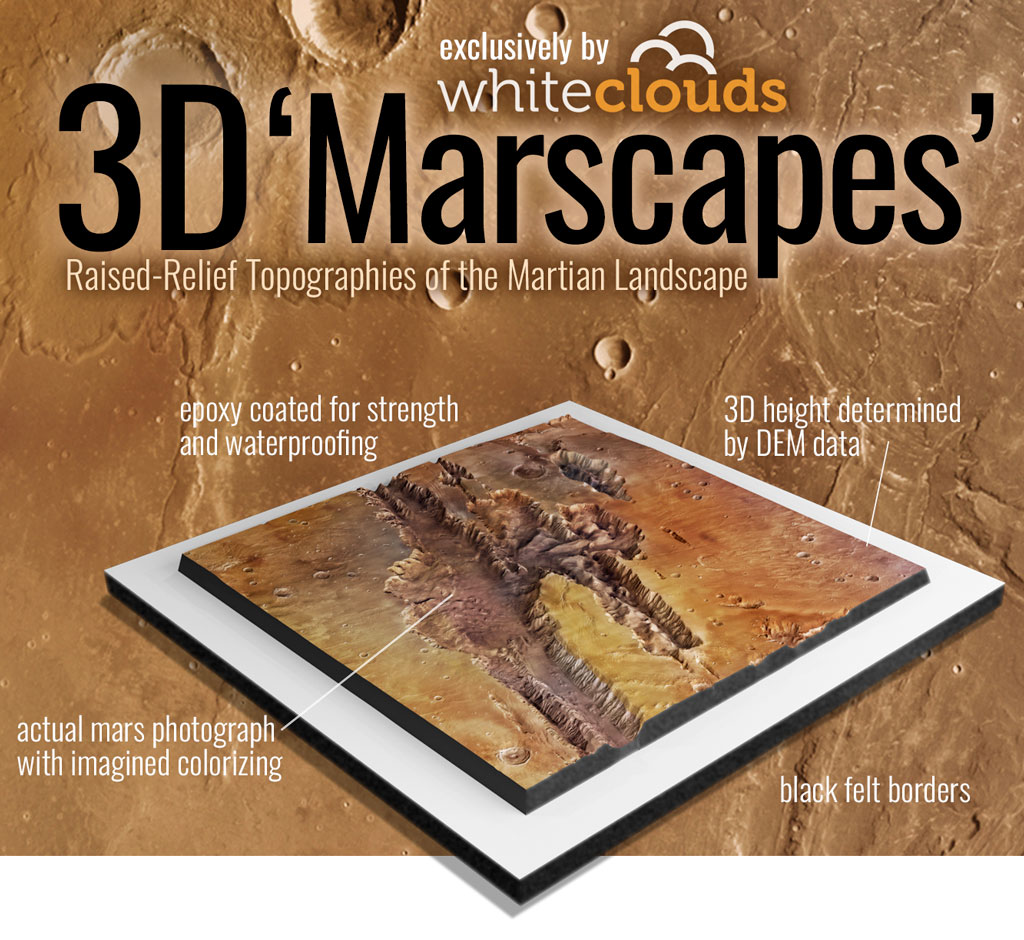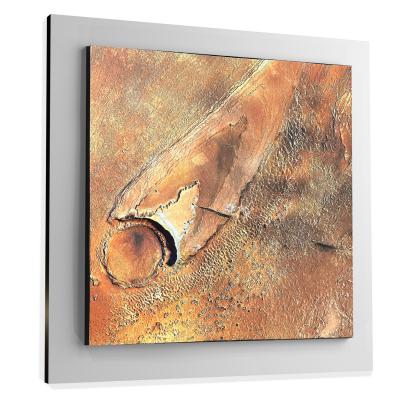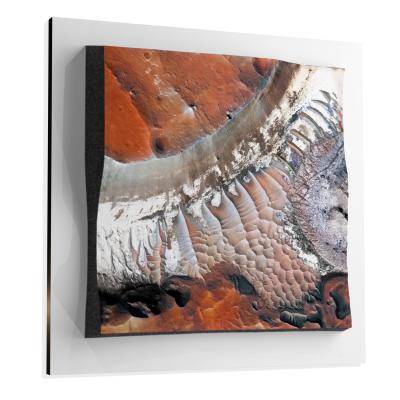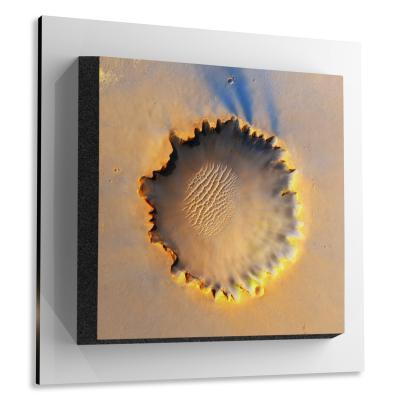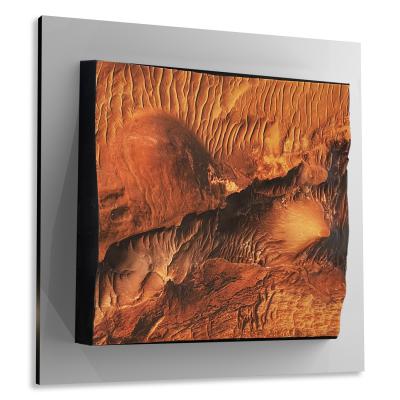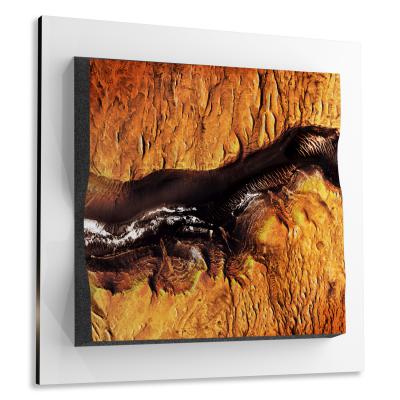North Pole of Mars
North Pole of Mars
We Build Custom 8K Mars Canvas Prints of the North Pole of Mars
Did you know we make
custom
8K Mars Canvas Prints

and
3D Marscapes

North Pole of Mars
The North Pole of Mars has long captivated both scientists and laypeople alike, as it remains one of the most enigmatic and unique regions on the Red Planet. The potential insights it offers into Martian geology, climate, and even the possibility of life make it a key target for ongoing scientific research. This report aims to provide an in-depth look into various aspects of the Martian North Pole, including its geographical location, geological composition, significant discoveries, scientific missions that have studied the area, and the intriguing geomorphological features that characterize the region.
 North Pole of Mars
North Pole of Mars
Geographical Location
The North Pole of Mars is a profoundly fascinating area, primarily located around the 90°N latitude and encompassing a geological feature known as Planum Boreum. This polar cap has an extensive reach, spreading out to approximately 1,000 kilometers in diameter and plunging to depths of up to 3 kilometers below the surface. The sheer scale of the region poses significant challenges and opportunities for planetary scientists. The cap is composed of multiple layers of water ice and frozen carbon dioxide, and it experiences drastic diurnal and seasonal changes in sunlight exposure. During the Martian summer months, this region basks in continuous, 24-hour sunlight, while during the harsh Martian winter, it plunges into a ceaseless, icy darkness.
The climate here is incredibly harsh, with temperatures plummeting to extreme lows that make the region one of the most challenging environments on Mars to study. Yet, these very challenges present unique opportunities. Understanding how materials and geological features survive in these conditions can offer critical insights into Martian history and the planet’s overall geophysical dynamics. Moreover, the extreme conditions, coupled with the region’s relative inaccessibility, mean that extensive logistical planning is required for scientific missions, whether they are orbital, robotic, or, potentially in the future, manned. Despite the challenges, the North Pole stands as an invaluable natural laboratory, offering a pristine environment in which to study the untouched and ancient aspects of Martian history.
Advertisement
Sample Marscapes
Geological Composition
The North Pole’s geological structure represents an intricate labyrinth of materials, forms, and historical data. The polar cap, which serves as the most visually prominent feature, consists chiefly of water ice but also incorporates a significant volume of carbon dioxide ice. Below these expansive icy terrains lies a treasure trove of stratified layers of dust, sedimentary deposits, and possibly ancient soils, accumulated meticulously over countless Martian years. Radar data, especially from missions like the Mars Reconnaissance Orbiter, point to the existence of varying stratigraphic layers. These layers could potentially serve as an unparalleled chronicle of Mars’ climatic past, essentially acting as a Martian “ice core” that can be studied for a better understanding of the planet’s historical climatic shifts.
But the story doesn’t stop there. Mineralogical surveys have detected traces of various intriguing minerals, including gypsum and several types of perchlorates. These minerals offer tantalizing clues regarding not only the geological processes at play but also the chemical conditions of ancient Mars. They could provide evidence regarding the planet’s water history and may hint at conditions that could have been conducive to simple forms of biological life. In essence, the North Pole is a geological library, just waiting for us to turn its pages.
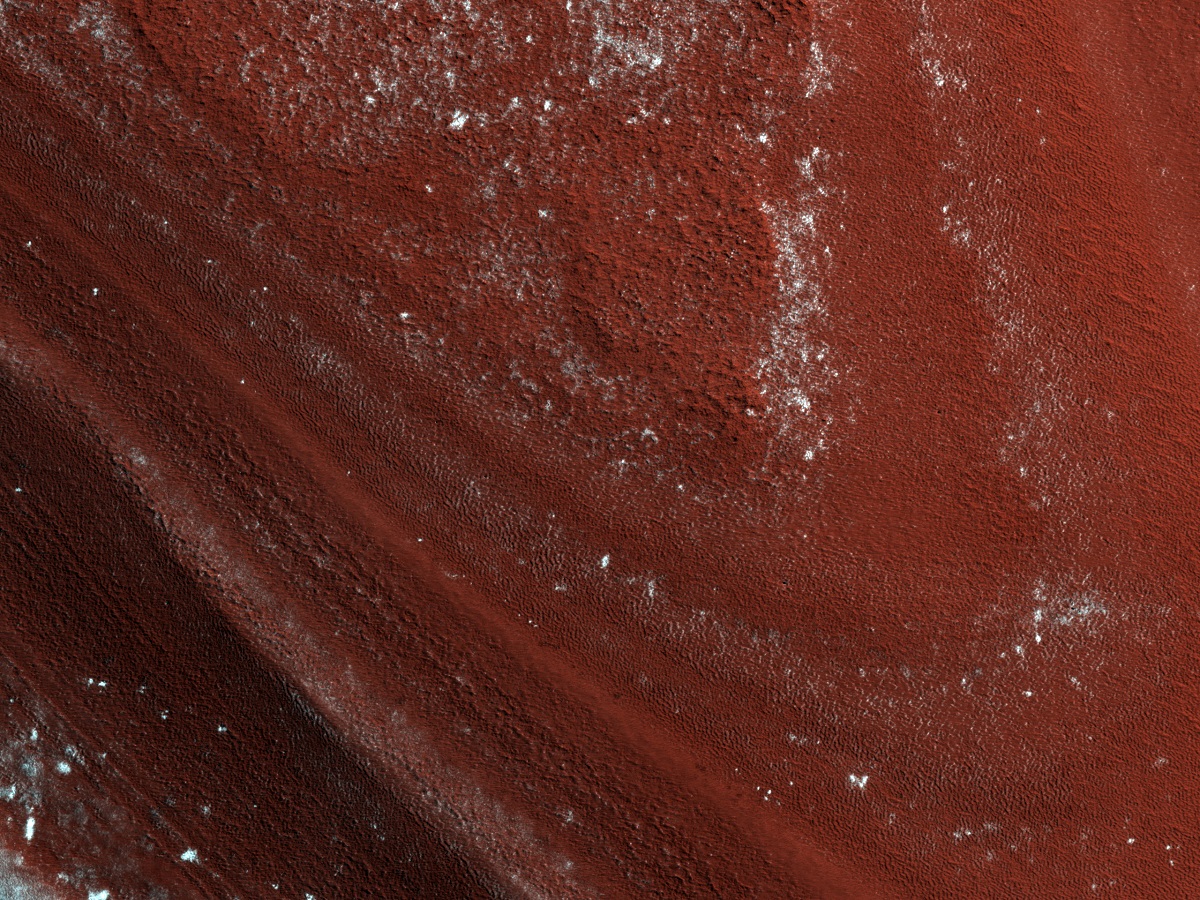 Stratigraphy of the North Polar Deposits
Stratigraphy of the North Polar Deposits
Significant Discoveries
Water-Ice Reserves
One of the most groundbreaking discoveries pertaining to the Martian North Pole is the confirmation of massive subterranean water-ice reserves hidden beneath the surface layers of the ice cap. Radar and spectroscopic data from various missions have indicated that these aren’t minor pockets but are, in fact, expansive reservoirs. The implications of this discovery are far-reaching. Not only does this provide a new chapter in our understanding of the Martian hydrological cycle, but it also potentially serves as a crucial resource for future human expeditions to the planet. Water could be extracted and purified for consumption or even split into hydrogen and oxygen for fuel, making the North Pole a critical logistical point for future Mars colonization.
Seasonal CO2 Fluctuations
Another paradigm-shifting discovery has been the understanding of the seasonal cycling of carbon dioxide at the polar cap. During the Martian winter, carbon dioxide “freezes out” of the thin Martian atmosphere and contributes to the growth of the polar ice cap. Come summer, this process reverses: the carbon dioxide sublimates back into the atmosphere. This dynamic process plays a significant role in modulating the planet’s already thin atmosphere and may have implications for understanding past climatic conditions.
Ancient Climate Data
Perhaps one of the most tantalizing aspects of the North Pole is the layered sedimentary deposits below the surface ice. These sedimentary layers are considered Martian climatic archives, offering an unparalleled record of past conditions. Similar to how Earth’s ice cores have provided invaluable insights into our own climatic history, these Martian deposits could reveal the planet’s past atmospheric composition, temperature ranges, and even potential for ancient bodies of liquid water.
Scientific Missions
Mars Reconnaissance Orbiter (MRO)
The Mars Reconnaissance Orbiter has been a cornerstone in the study of the Martian North Pole. Using its advanced scientific payloads, including the High-Resolution Imaging Science Experiment (HiRISE) and the Shallow Radar (SHARAD), MRO has provided unprecedented details about the topographical variations, geological formations, and mineral compositions that make up this polar region. The data has been crucial not just for academic purposes but also for planning future missions to the Red Planet.
Phoenix Mars Lander
While not landing directly on the North Pole, the Phoenix Mars Lander was situated at a high latitude close enough to provide valuable “ground truth” data that corroborated and expanded upon orbital observations. One of its significant contributions was the confirmation of the presence of water-ice just beneath the Martian soil, thereby strengthening the theories postulated from orbital data.
Future Missions
Numerous upcoming missions are in various planning stages specifically to explore the North Pole, propelled by its significant role in unveiling Mars’ geophysical, climatic, and perhaps biological narratives. These missions may include more advanced landers, rovers equipped with drilling capabilities, and even sample-return missions that could bring back pieces of the Martian pole to Earth for more intricate studies.
Geomorphological Features
The geomorphological landscape of the Martian North Pole is as varied as it is intriguing. It is home to sprawling plains of frozen carbon dioxide and water ice, but it also features unusual “spider” formations—patterns carved into the ice by sublimating carbon dioxide that escapes through vents in the surface. These unique formations have been observed through high-resolution imaging and serve as a stark reminder of the dynamic processes still occurring on Mars.
Adding another layer of complexity to the landscape is the presence of intricate dune fields. These aren’t merely piles of sand; they are carefully sculpted by historic wind patterns, providing an understanding of both current and ancient Martian atmospheres. One of the most striking features is Chasma Boreale, a canyon-like formation that provides compelling evidence of erosional processes, likely influenced by both wind and ancient water flows. Another fascinating element is the presence of polar troughs, which are spiral-shaped depressions extending outwards from the North Pole. These are believed to result from a combination of factors including differential solar heating and the Coriolis effect due to the planet’s rotation. All these features, when studied collectively, contribute to a rich tapestry that tells the story of Mars’ geological and climatic history.
The North Pole of Mars is not merely an icy wasteland but a dynamic, geologically complex region that has much to teach us about the Red Planet. From its massive ice reserves to its layered history recorded in sedimentary formations, the Martian North Pole offers endless opportunities for scientific discovery. It plays a pivotal role in the planet’s current climate and has the potential to reveal the mysteries of Mars’ past, possibly even serving as a lifeline for future human exploration. Its study will undoubtedly continue to be at the forefront of Martian scientific exploration for decades to come.
Check out our 3D Mars Learning Center for more information on Mars and the North Pole of Mars. You can also learn more at: NASA Mars Exploration.
More About Mars
Contact us today to learn more about our 3D services and how we can help you achieve your goals.
